
This is perhaps not the most exciting walk in the world, though it does improve considerably towards the end, mainly because it reaches the Grand Union Canal, and if there's one thing I like, it's canal walking. There's also at least one lovely village green (if you can ignore the pounding traffic) and a handful of cheery parks, and some parts are pleasantly green.
But there isn't a great deal to write home about, so I apologise if this isn't the most uplifting account you've ever read of a day's walk. On the other hand, this section brings me to within a stone's throw of the halfway point in my tubewalk, so it's worth celebrating for that reason alone. Hooray for the Central line, and I'm sure it will get more interesting as it heads east, just like all the other lines...
West Ruislip to Ruislip Gardens
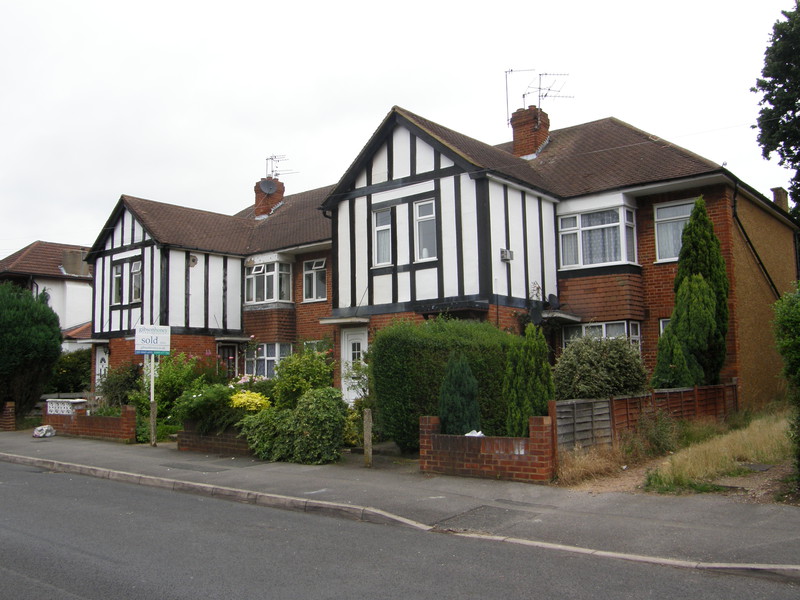
After over 200 miles of walking through Greater London, a large portion of it through the suburbs of zones 4 to 6, I think I'm qualified to hold opinions on the different flavours of suburbia across the capital... and I have to say, I still don't particularly enjoy walking through the backstreets of Ruislip. It's strange, because I think I'm developing quite an affinity with the various ways in which we choose to set up home, and even the grittiest suburbs do something to me, but endless roads of semi-detached houses, all produced from slight variations on the same mould, are just not that thrilling.
It's a bit of a long trudge from West Ruislip station, then, as it's pretty much 100 per cent suburbia all the way to Ruislip Gardens. I first experienced the suburbs of Ruislip a month ago when walking the Metropolitan line from Harrow-on-the-Hill to Uxbridge and I wasn't terribly impressed back then; second time round I'm still not that thrilled. The tidy houses along Chichester Avenue threatened for a micro-second to change my mind and the Mock Tudor housing on Beechwood Avenue was, at times, quite enticing, but this is a better place to live than it is to explore, and I managed to make good time through the backstreets.

Just after The Bell, a good-looking pub on West End Road, the road slips under the railway line and Ruislip Gardens station appears on the left. It's a fairly forgettable design, lacking the flair of stations by Green, Heaps or Holden, but that's not terribly surprising when you consider the period that this part of the line was built. The New Works Programme of 1935-1940 included a proposal for extending the Central line from North Acton to Denham, but the outbreak of the Second World War rather took the wind out of the programme's sails, and the introduction of the Green Belt in the 1947 Town and Country Planning Act meant the western extension plans for the Central line had to be cut back from Denham to West Ruislip. Central line extension was prioritised after the war and by 1949 we had the Central line that we know today, but spending lots of money on beautifully designed stations wasn't always top priority in austere post-war Britain, and West Ruislip and Ruislip Gardens are good examples of functional design rather than aesthetic. The stations further along this leg are more attractive, but out here in the sticks, one assumes that the budget wore a little thin.
Ruislip Gardens to South Ruislip
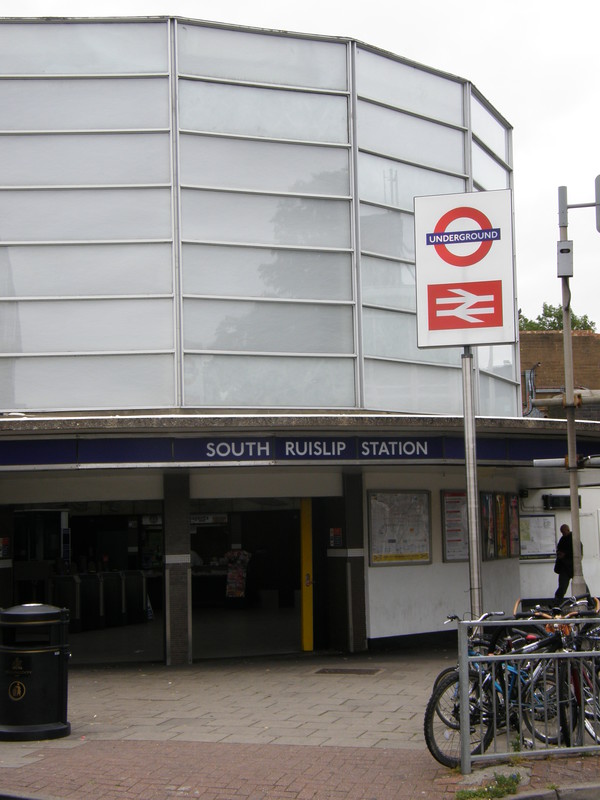
It isn't far from Ruislip Gardens to South Ruislip, and I thought it would be interesting to walk past RAF Northolt, which takes up a large amount of land to the west of Ruislip. Unfortunately – and not surprisingly – absolutely nothing is visible from the road that runs along the eastern edge of the airfield, though there is a fence with a small hole in it at the eastern end of the runway through which you can presumably see what's going on. I'd like to report that it's a fantastic view and that watching the planes land is a highlight of this walk, but there was a man standing in front of the hole, poking his pocket telescope through, and I figured I'd better leave him alone in case he took offence at me usurping his peep-hole. Instead, I'll rest easy knowing that not only was this the airfield where Ronnie Biggs was arrested when he flew back into Britain, but it was also where the body of Princess Diana was flown in after the fatal crash in Paris.
The housing around Northolt is not that thrilling, with rows of white terraces and a proliferation of bungalows, but South Ruislip station is a different matter. Topped by a large and very impressive brushed metal rotunda, the inside of the station features a concrete frieze by Henry Haig, and the whole building is pleasantly reminiscent of Holden's high-ceiling design at Chiswick Park, updated in buffed metal.
South Ruislip to Northolt
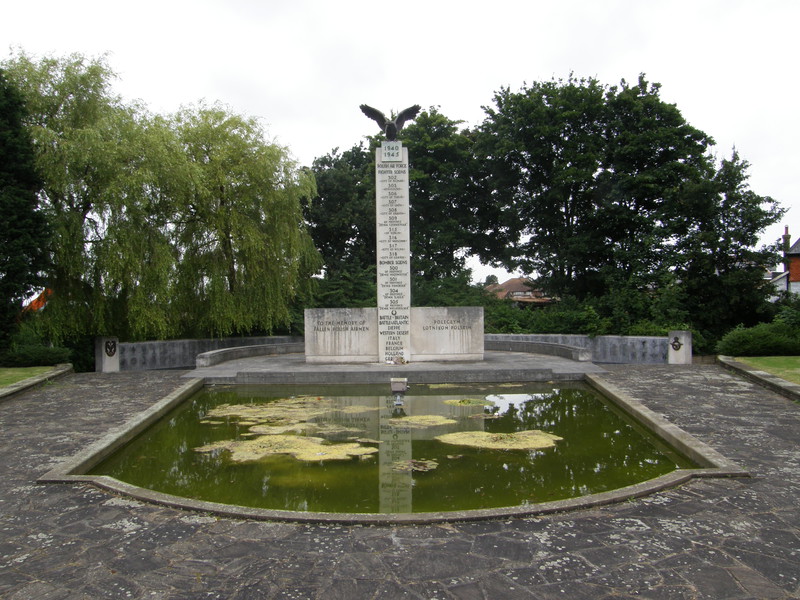
There's no particularly direct walking route from South Ruislip to Northolt, so I thought I'd head south to take in a memorial, a golf club and a park. I didn't realise it would take me via Mars in the process, but that's all part of the thrill of tubewalking...
Yet more pleasant but uninspiring suburbia takes you from South Ruislip towards the thundering A40, but just before the roundabout, look right to see the Polish War Memorial. This lonely memorial is dedicated to the memory of fallen Polish airmen, and I'm sure this was a much quieter location when it was unveiled on by Lord Tedder, Chief of the Air Staff. Made from Portland stone with bronze lettering and a bronze eagle on top, the memorial is inscribed with nearly 2000 names of Poles who lost their lives in war, and it has been visited by at least two Polish presidents. It's a bit of a shame that the memorial is bang next to an incredibly busy roundabout above the white noise of the A40, but I suppose that's 60 years of motoring progress for you.

On the other side of the A40 from the memorial, further south along West End Road, is the Dog Rose Ramble. This circular 8-mile walk comes in from the west, where it meets up with the Hillingdon Trail, and continues east to the Grand Union Canal, which suits me well as the canal slips reasonably close to the next few stations along the line. So I turned left at the sign and headed into what the map claimed was an 18-hole golf course called the C & L Golf and Country Club, but which turned out to be Armageddon; I'd wondered why all these dirt-laden trucks were pulling in to the clubhouse car park, but it turned out that not only is there no longer a golf course here, there's utter chaos.
'Over here!' waved a man as I strode into the mud-bath, wondering which direction I was supposed to trudge. 'Are you following the Dog Rose Ramble?'
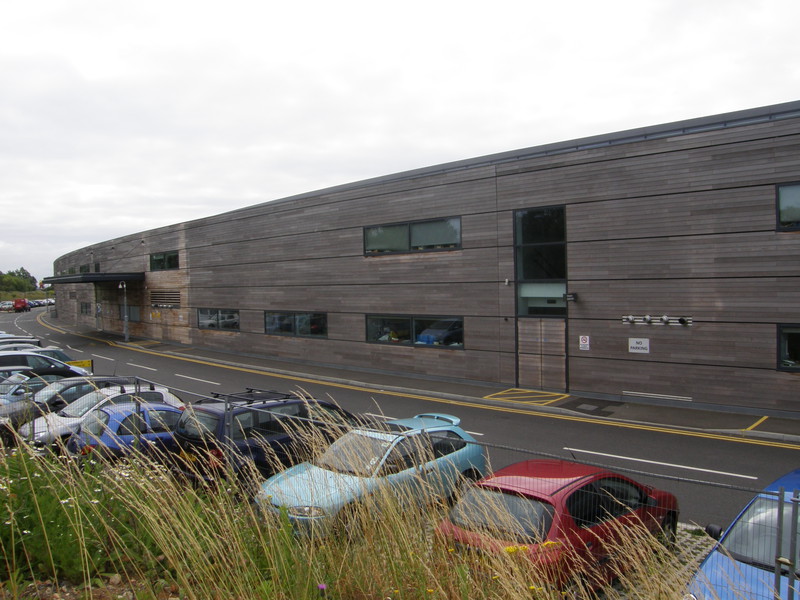
'Yeah, I am,' I said, trying to keep the surprise out of my voice. I'd assumed I was going to have to take a large diversion after failing to explain to a hard-hatted man that yes, I did want to walk across his building site, but instead he smiled at me reassuringly and pointed into a Martian landscape of hills, mud, and noisy trucks merrily dumping yet more soil, as if it were needed.
'Just stick to this path here,' he said, pointing down a barely visible set of tyre tracks, 'and go between two coppices there. You'll come to a white sign, and then you'll be back on the path.'
'Thanks very much,' I said, beaming in appreciation. 'So what's happening to the golf course, then?'
'It's being landscaped,' he said, 'and much improved. Mind the mud, now.'

And with that I headed off into the quagmire and got hopelessly lost, before spotting the white sign from the summit of a handy pile of earth, which took me onto a thin path between fields and an impressive wooden building. This turned out to be the West London Academy, designed by the ubiquitous Norman Foster and opened in 2005, and although it's hard to see in its entirety from the Dog Rose Ramble, the curves of the grey wooden exterior are quite beautiful.
Crossing the A40 via a footbridge – on which someone had scrawled the rather heart-warming graffiti 'AB, B MY GIRL, 1 DAY' – the Ramble took me through some tidy suburbia to Islip Manor Park, a pleasant green space that didn't quite entice me enough to serve as a lunch stop, but which was worth visiting. Northolt station is a little further on, along the A312, and it's a massive shame that the A312 is a constant drone of traffic, because Northolt has a delightful village green, with an impressive pub, a cute little clock tower that commemorates the coronation of George VI in 1937, attractive flower beds and plenty of benches for tired hikers. The station is, in contrast, a completely forgettable affair at the northern end of the green, though it's far enough away not to spoil the between-the-wars flavour of the centre of Northolt.
Northolt to Greenford
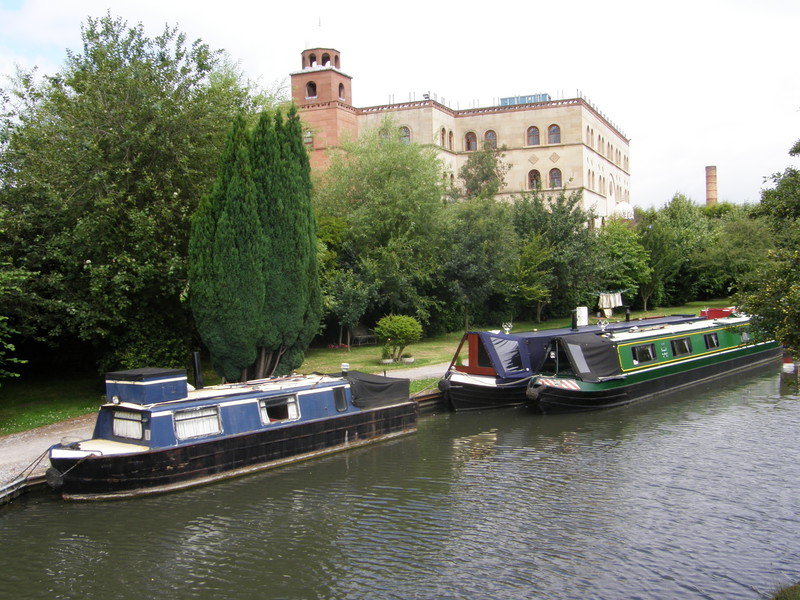
Just south of the village green is Belvue Park, which contains the site of a medieval manor house, as well as the parish church of St Mary; the church dates from the 15th century, but is currently smothered in scaffolding. There's a good view over to Northala Fields, an extension to Northolt and Greenford Country Park right next to the A40 that contains four conical, man-made hills that you can climb; unfortunately I couldn't include Northala Fields on this tubewalk, but you just can't include everything.
To the southeast of the park, a small path takes you to the Grand Union Canal. The towpath passes the delightful minaret of Al Masjid ul Husseini, and colourful narrow boats are moored on the opposite side of the canal for a few hundred yards, an aspect of towpath walking that I always enjoy (it's the canal equivalent of suburbia, I suppose). The walking, like all canal routes, is flat, easy and enjoyable, and I slipped happily into the zen-like trance I always enjoy when walking along towpaths. There are some huge industrial units along here, and judging by the thick fencing, they clearly don't want anyone invading their territory, but this doesn't detract from the walk; in fact, it probably makes it more interesting, at least to nosey buggers like me.
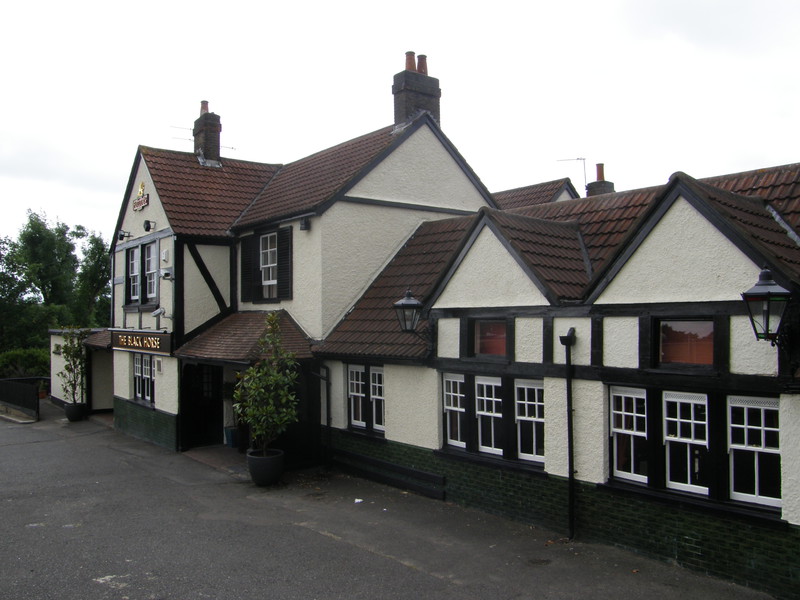
It's a shame it has to end, but when it does, it does so in some style, for the Black Horse pub at the bridge over Oldfield Lane North is a corker, with a lovely beer garden right by the canal. If you weren't on a tubewalk, you'd be mad to head south from here, as Oldfield Lane North is surrounded by industrial units and is a bit of a shock after the placid towpath, but at least there is one flag to fly. Back in 1856, on a site just to the south of the pub, Sir William Perkin discovered mauveine, the world's first synthetic dye; he later produced alizarin on the same site, and in doing so laid the foundations for the organic chemicals industry. These days it's all bread factories and office space, but that's surely preferable to a chemical works...
Greenford station is on the other side of the tracks from the industrial units, tucked away on the south side of the railway bridge. The station dates from 1947, when the extension from North Acton to Greenford was opened (the further extension to West Ruislip was opened in 1948). The station building is pleasantly designed and curves nicely out of the railway arches, but the interesting thing about Greenford isn't its attractive 1940s exterior, it's the escalator inside. Not only is Greenford the only Tube station that has an escalator that ascends from street level to the platforms, but it's also the last remaining wooden escalator on the whole network, as wooden escalators were removed from all below-ground stations following the 1987 fire at King's Cross.
Greenford to Perivale
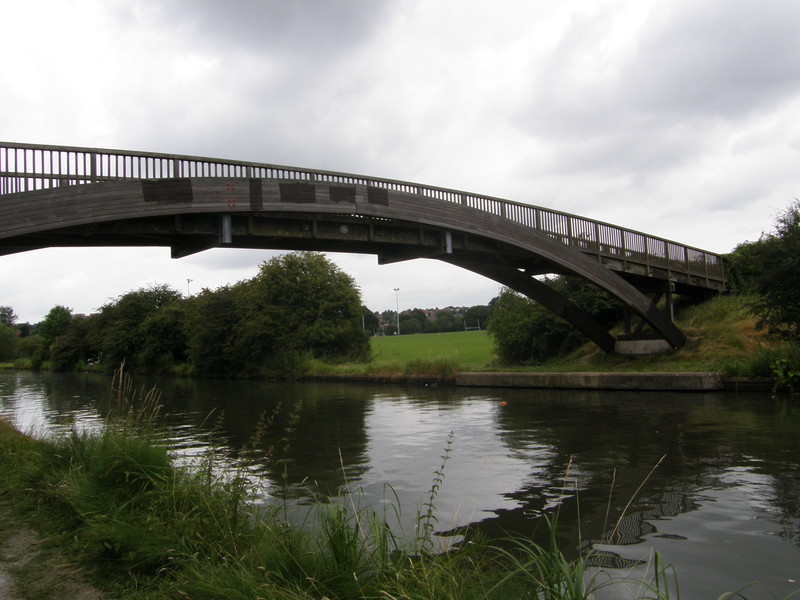
The Capital Ring passes by Greenford station on day 9, and it's always worth following the Ring where it makes sense (which, in this case, it does). The signs soon take you past the large Westway Shopping Park and into Paradise Fields Wetlands, an enjoyable spot that has a definitely rural feeling to it, though the constant white noise and peeping horns of the Greenford Road are rather distracting; the path is extremely well made, though, and it makes for a nice little jaunt through lots of lush greenery.
At the north end of the wetlands the Ring rejoins the Grand Union Canal and heads east along the towpath. There's not a lot to see along this stretch, but that doesn't make the walking any less enjoyable. In the distance is Horsenden Hill, which I'll be climbing on my Piccadilly walk from Uxbridge to Acton Town, and there's no hint of the satanic mills of the previous section's canal walk; there are units to the south, but they're soon replaced by Perivale Wood as the canal approaches a bridge and a lovely little mooring by Horsenden Lane.
Perivale station is a short walk south along the lane, past a huge and very modern residential development. The station sports a very attractive 1940s frontage, with a curved bank of glass slats set above the entrance, surrounded by a curved red brick front with an Underground roundel at each end. It's a fitting end to a walk that won't set the world on fire, but which contains some enjoyable surprises; just don't mention the suburbia.